Jicarilla Cultural Arts & Heritage Center
P.O. Box 507
Dulce, New Mexico 87528
Highway 64 located next to the
Jicarilla Shopping Center at the
4 way stop
Hours:
Monday – Friday
8 a.m. to 5:00 p.m
Weekend hours call for hours.
The forerunner, the Jicarilla Buckskin and Leather Craft Industry, became the Jicarilla Apache Arts & Crafts Museum in 1965. And in 2017 became the Jicarilla Cultural Arts & Heritage Center. The new industry was created to preserve the traditional and modern arts and crafts of the tribe.
The Jicarilla Cultural Arts & Heritage Center is here to preserve the Jicarilla cultural arts, employ tribal members, generate revenue for the Nation, preserve and store historical museum items and educate our visitors about the history and cultural arts of the Jicarilla Apache Nation.
We have 11 artisans employed with our center who produce a wide range of cultural crafts such as basketry, beadwork, moccasins, micaceous pottery, and sewing clothing.
Our artisans sell and demonstrate at Native art markets, trade shows, state fairs, conferences and museum exhibitions.
Basketry, beadwork, and micaceous pottery are the three foundational arts of the Jicarilla Apache people. Since the 1800’s these arts have been an income-producing industry throughout northern New Mexico settlements and continues today on the Jicarilla Apache Reservation.
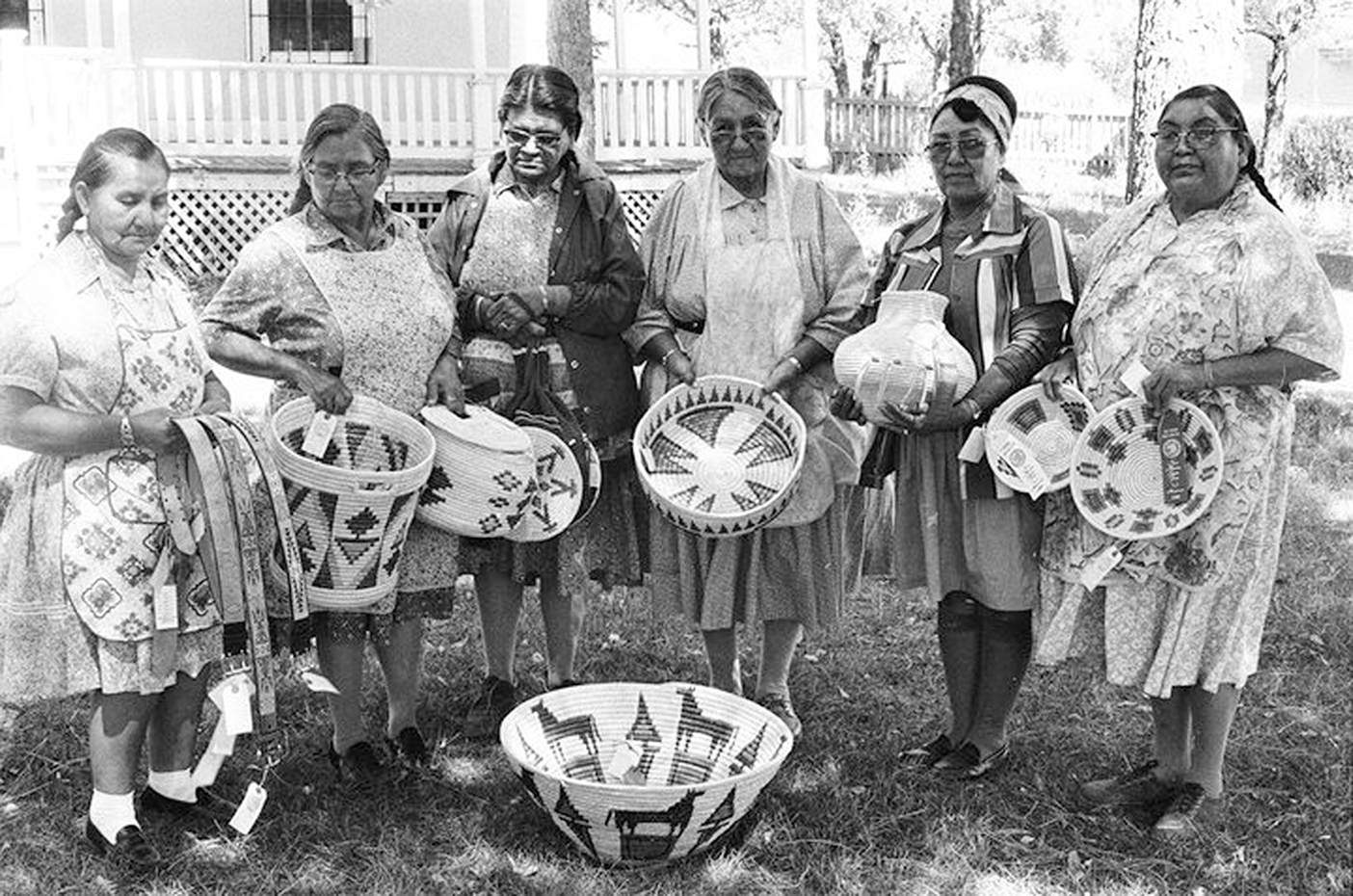
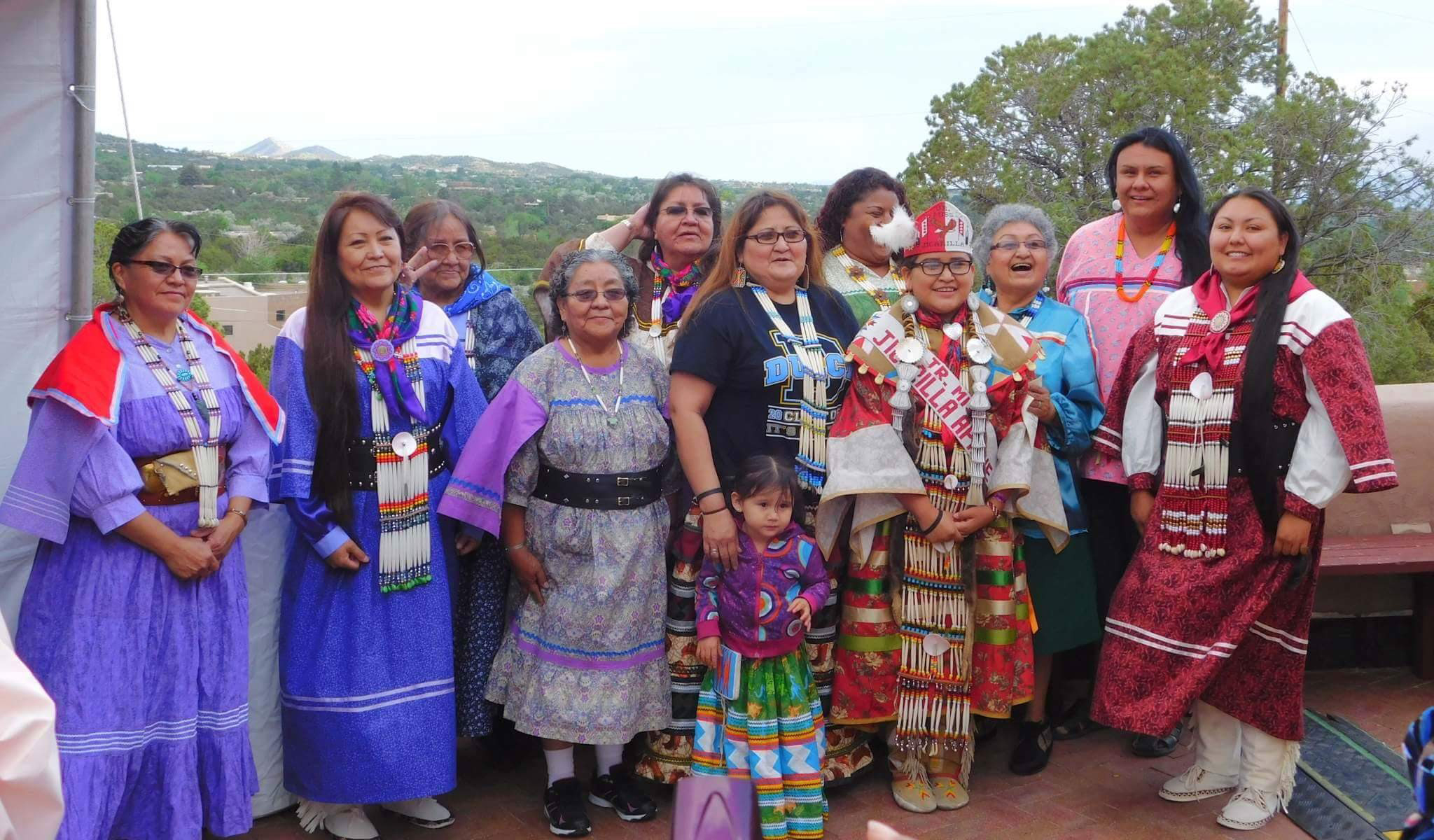
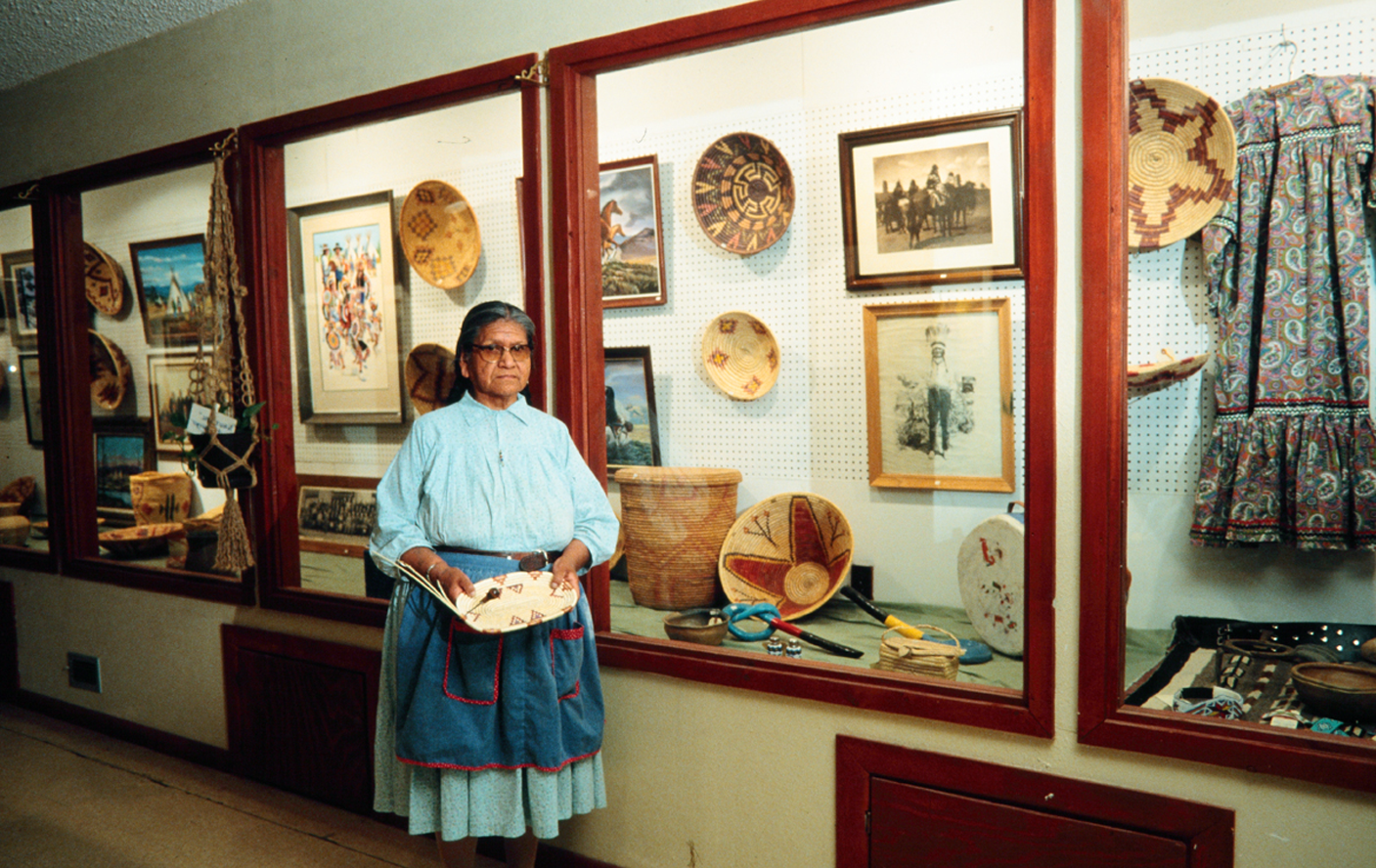
The Jicarilla Apache have been, historically so well-known for their unique basket making techniques that during colonial times, the Spanish called them, “Jicarilla” which means basket makers. Their former traditional homelands in Southern Colorado, and Northeast Mexico along the sacred rivers, consisting of the Arkansas, Rio Grande, Pecos, and Canadian Rivers, as well as streams and lakes, have been the gathering areas for willow and sumac bushes for coiling and weaving of the baskets. The basket is held in great respect by the Jicarilla because it plays a very important part in their religious ceremonies. There are specific traditional ways to make a basket in which every basket maker is to follow. A young Jicarilla girl starts learning how to make baskets as early as her sixth birthday. Under the guidance of a seasoned and skilled basket weaver, usually an adult female relative, the future artisan learns the special techniques from splitting and curing of the sumac/willow, to the central start of the spiral weaving of the materials to create the various shapes the baskets ultimately have. The designs/style are the creation of the basket weaver and can even be attributed to family and clan groups. A characteristic of Jicarilla basket making is the final row which has a fish tail braid and a spiritual line starting from the center to the top of the basket. Today this tradition continues through the training here at the Jicarilla Cultural Arts & Heritage Center. Many of our basket weavers have won numerous prizes and state and regional art shows and have become well-known in their own right.
The use of glass beads became popular trade items with Indian traders as early as 1800’s. The Jicarilla artist began using beads to adorn buckskin clothing, shirts, pants, dresses, beading directly onto hand tanned animal skins to modern belts. The design motif come from the natural environment, mountains, clouds, stars, water, and animls such as birds, horses, deer, butterfly… Ocean shells such as abalone, mother of pearl, and the pink conch are used along with turquoise stones for adornment.
Micaceous pottery, like basketry, has been a traditional art. Jicarilla woman during territory times made utilitarian cooking pottery ware (bean pots) which were highly prized and made from local mica filled soil that could with stand high temperatures. It was widely traded to Northern New Mexican Spanish and Pueblo settlements and became a viable Jicarilla industry. During the early reservation era the pottery art form nearly died out. In the early 1980’s due the the initiative of the Pesata family, particularly Lydia Pesata is credited with reviving the Jicarilla Apache pottery tradition. Today this pottery has taken form that ranks in the category of fine arts. Many Jicarilla Apaches are still actively producing micaceous pottery.
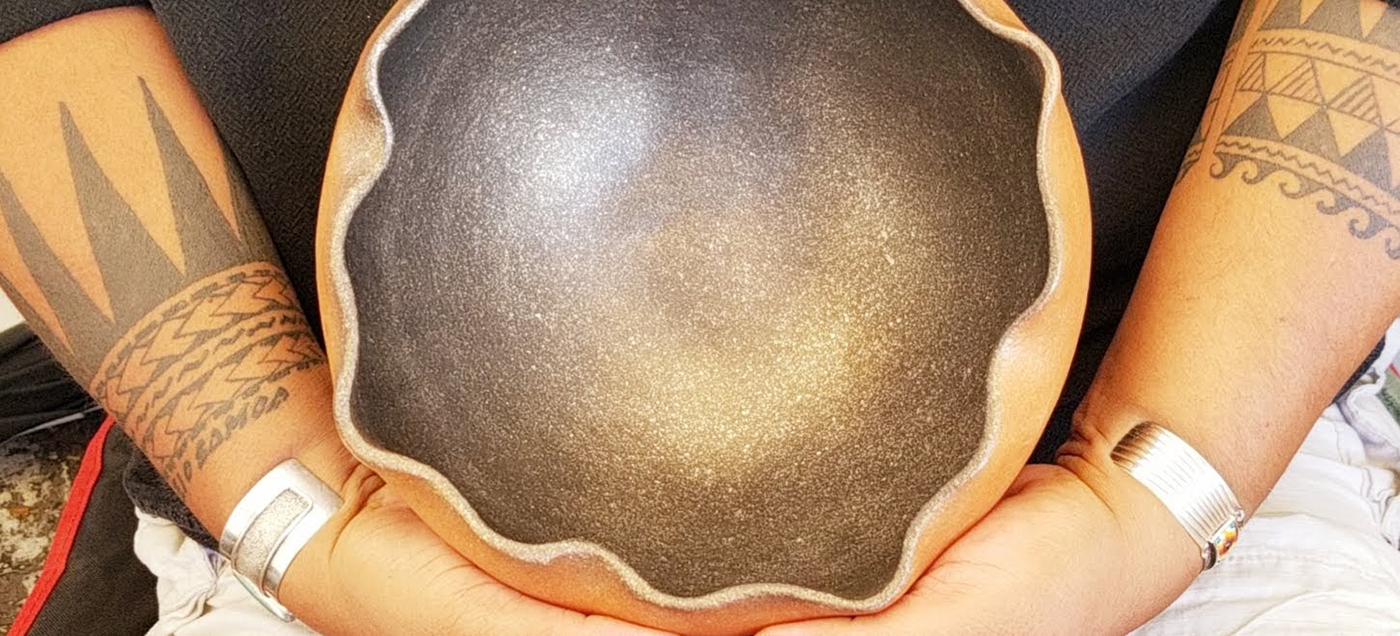
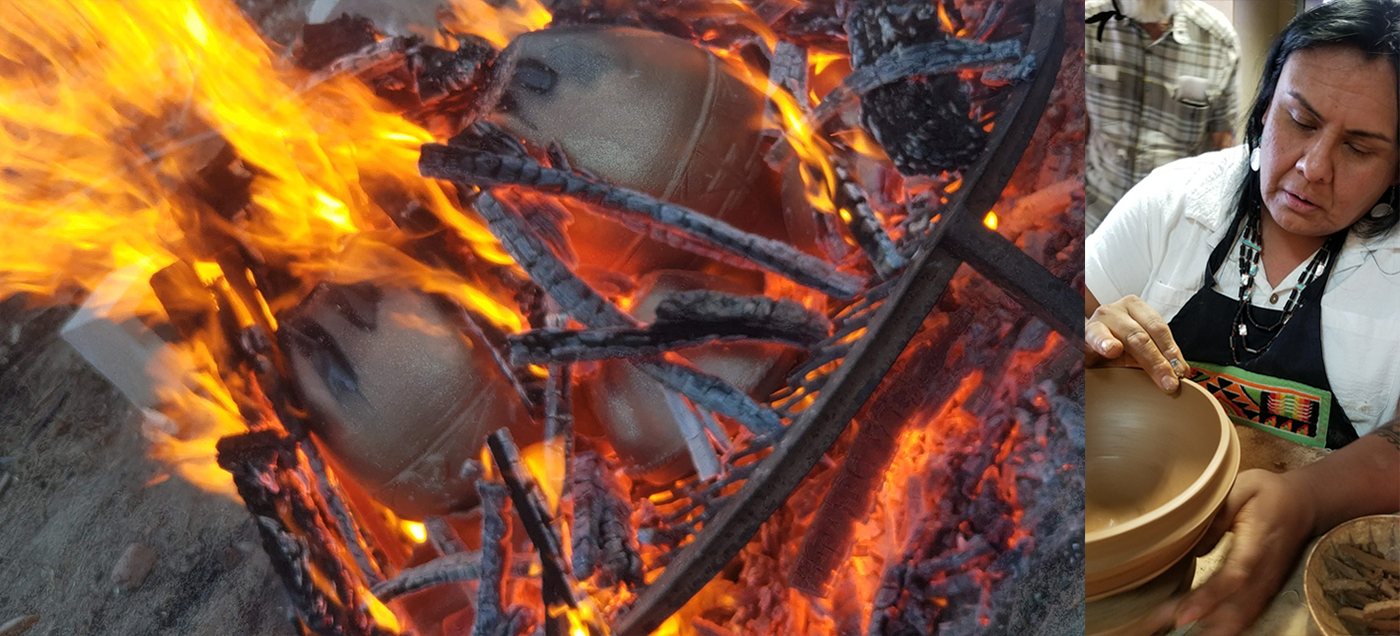
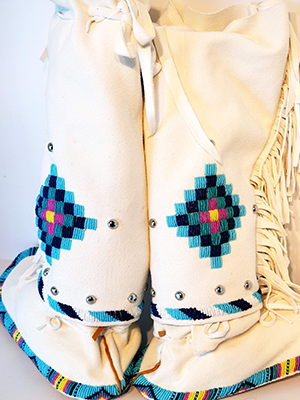
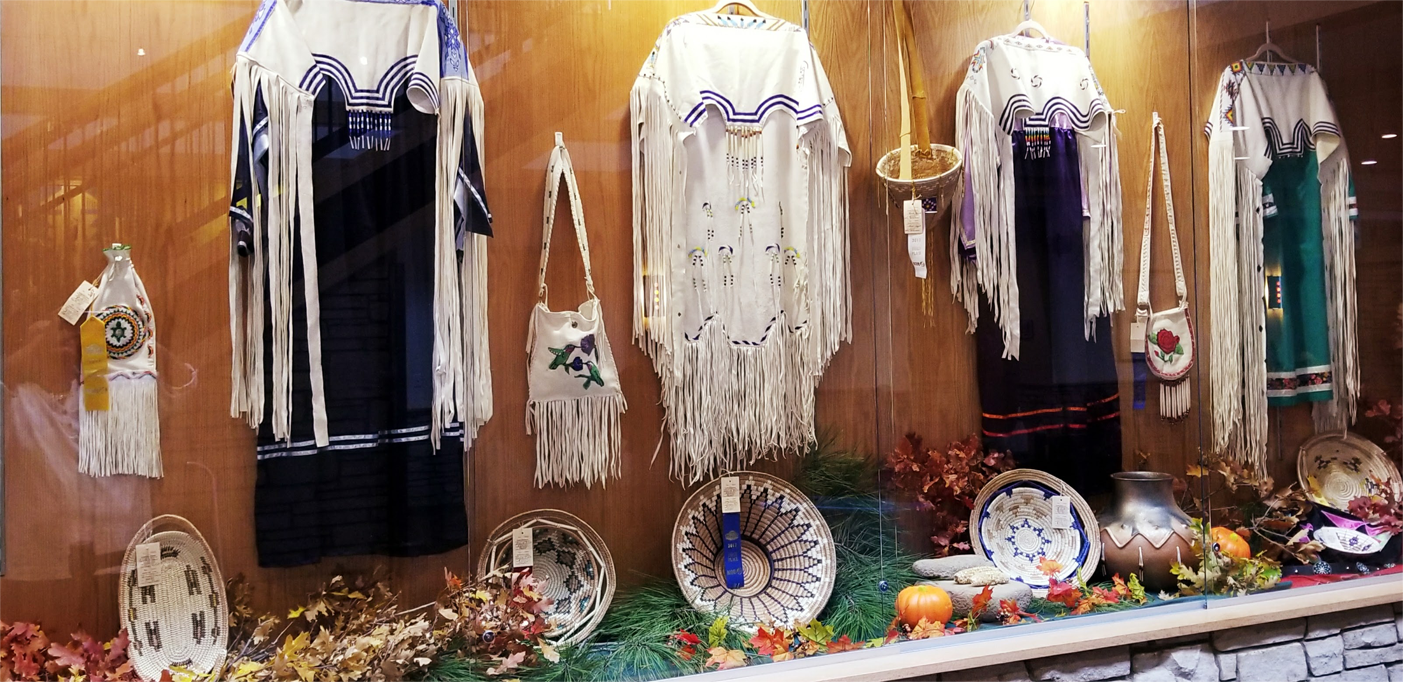
Jicarilla Cultural Arts & Heritage Center
P.O. Box 507
Dulce, New Mexico 87528
Highway 64 located next to the
Jicarilla Shopping Center at the
4 way stop
Hours:
Monday – Friday
8 a.m. to 5:00 p.m
Weekend hours call for hours.
Copyright 2023 Jicarilla Apache Cultural Arts and Heritage Center